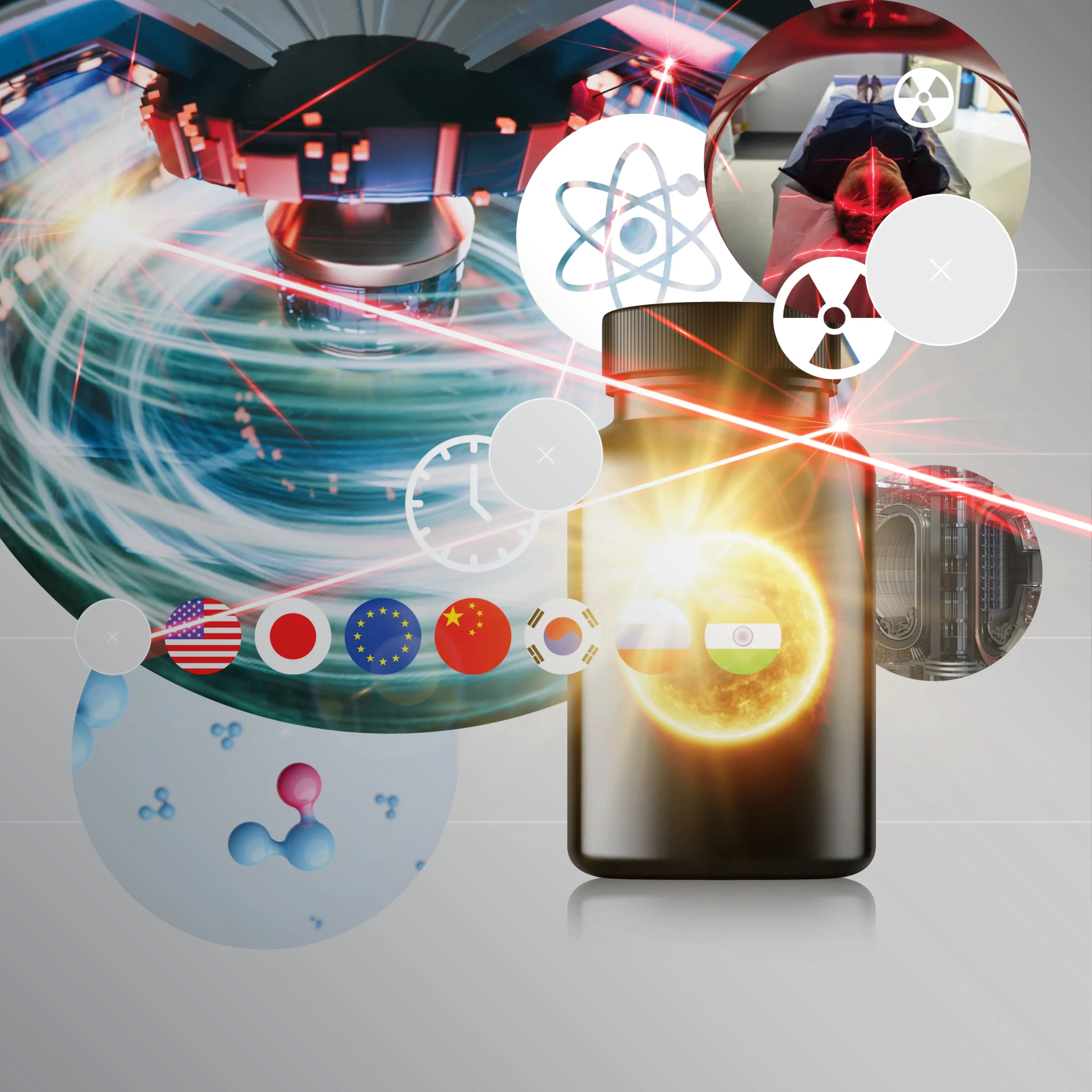In the ultra-high-pressure environment of the very innermost part of the Sun, every fusion of two hydrogen atoms creates the energy that would keep a 60-watt light bulb shining for over 100 years. On Earth, we can’t recreate those enormous pressures, but we can compensate for that by achieving much higher temperatures. This, in addition to the use of particular isotopes of hydrogen that have extra neutrons and are thus more susceptible to fusing, means that we can now routinely achieve fusion on Earth.
Taking this to the next level requires that we do this over sustained periods, and at scale. If this can be achieved, nuclear fusion will provide zero-carbon, sustainable, essentially limitless baseload energy. This is nothing new: we have known it to be possible for around a century. What is new is that, though the field still faces a number of significant challenges, research achievements over the last five years have created genuine optimism that these challenges can soon be overcome.
In 2022, for example, the US National Ignition Facility (NIF) at the Lawrence Livermore National Laboratory in California achieved ignition, obtaining more energy from its fusion reaction than was required to start it for the first time ever in a laboratory setting, and demonstrating the scientific feasibility of laser inertial fusion. Since then, it has surpassed its own record several times, almost doubling the net fusion energy output. In 2023, the UK’s Joint European Torus (JET), based at Culham in Oxfordshire, set a new world record for the amount of fusion energy produced. Also in 2023, the Experimental Advanced Superconducting Tokamak at the Institute of Plasma Physics in Hefei, China, achieved a “steady-state high-confinement long-plasma operation” — a key component of sustained fusion-power system operation — for a record-breaking 403 seconds.
Of the significant science and engineering challenges that remain, the most basic one is the challenge of fuelling fusion-power systems. The hydrogen isotopes that fuel fusion plants are generally deuterium, which is available in seawater, and tritium, which is more difficult to source. There are only a few tens of kilograms of tritium globally, and fusion-power plants will typically require several kilograms per year of operation. So fusion-power plants will probably make their own tritium by channelling the high-energy neutrons emitted in the reaction into a lithium blanket. The nuclear interactions between the neutrons and the lithium are a source of new tritium that can be fed back into the device, creating a sustainable fuel cycle inside the machine.
Another key challenge is in materials science. The high-energy neutron flux and the elevated temperatures of a fusion-power system pose a danger to the fusion-containing structure. Maintaining the integrity of its containment structure will require advances in materials science.
The optimal design for a power plant-style fusion-power system is still a matter of debate. A number of options are being explored, with the torus (or tokamak), where fusion is provoked within a doughnut-shaped vessel, being the most-researched and tested approach for magnetic-fusion energy, and lasers (like NIF) being the most studied and tested driver for inertial-fusion energy concepts. That is why the tokamak configuration was chosen as the design for ITER, the International Thermonuclear Experimental Reactor. This collaborative project brings together scientists and engineers from the US, China, Europe, Russia, India, South Korea and Japan. 85 per cent of the world’s population is represented in this project.
ITER will produce 500 megawatts of fusion power within the next couple of decades. Although it will not function as a commercial power station, it will show that we can build power-plant-scale components for fusion. ITER involves about a million components and 10 million individual parts, most of which have never been designed or built before. ITER is thus priming the pump for the industrial supply chains necessary for fusion power, and bringing the types of components required off the drawing board on a scale that is consistent with the fusion power plants that will follow it.
Progress in fusion research is also demonstrating, through the investment that has been made, that fusion is of interest to the industrial sector. More than $6 billion of investment has gone into private fusion companies in the last few years. There are now more than 40 companies in the fusion space, eight of which have been selected by the US Department of Energy for a milestone-based public-private partnership programme to develop fusion power in the next decade.
Investment is also spurred by the fact that regulatory considerations for fusion are progressing. Fusion has some inherent safety characteristics: it cannot have a runaway chain reaction, and in the case of laser fusion, turning off the fusion reaction is as easy as flipping a switch. As a result, it is fully recognised that fusion-power systems should be regulated very differently from fission reactors. In the US, the NRC is in the process of modifying the framework that is used to regulate particle accelerators and make fusion a part of that regulation. The UK government plans to regulate fusion under the Health and Safety Executive rather than the fission power plants' governing body.
When commercial fusion is up and running, the electricity produced will likely be used as baseload to ensure the stability of electricity production. But it could also help with surge provision, putting it into competition with some very different types of energy production and storage. Fusion can also support hydrogen production through electrolysis, as well as thermal-energy applications. If fusion’s coolants are driven in certain ways, they can provide industries such as paper and chemical production, and other industries that are difficult to decarbonise, with a clean low-carbon source of heat. Another possibility is to take the nuclear component of the energy that's released from the fusion reaction in the form of high-energy neutrons and use it to produce radioisotopes such as a xenon, technetium and lutetium, which are used in medical imaging and cancer treatments.
Fusion has the potential to solve the challenge of energy equity and is a flagship demonstration of science diplomacy. Current projects operate in a wide range of jurisdictions and bring together scientists, engineers, managers, administrators and policy-makers from almost every nation. ITER, it is worth emphasising, is a collaboration between a number of nations that are experiencing enormous amounts of friction at the geopolitical level but are nonetheless finding ways to collaborate in this technical sphere. When power-plant-scale fusion is achieved, it will not only be a major technological advancement that democratises energy production, nor just a significant step towards decarbonisation, but also a signifier of hope for humanity.







